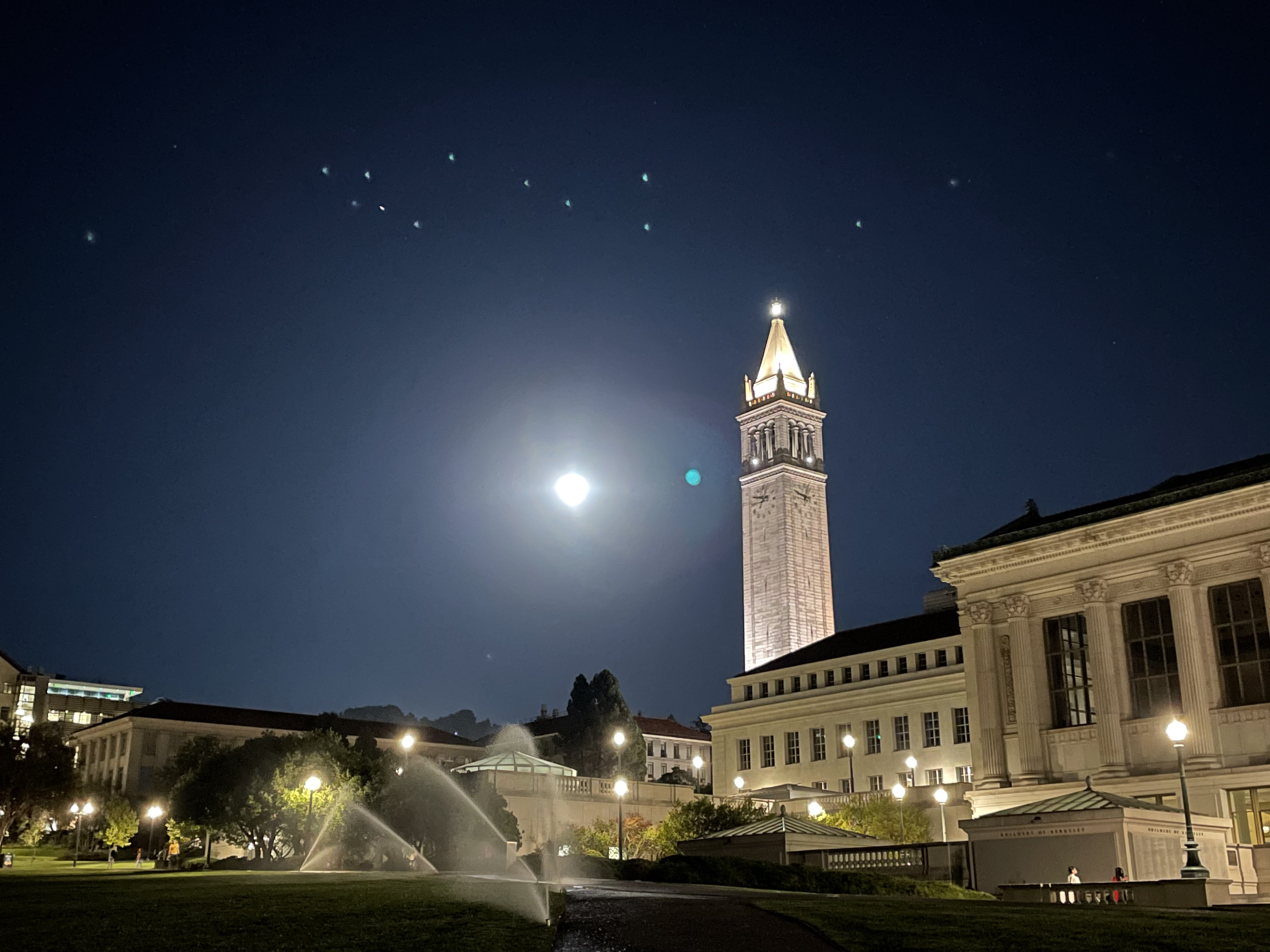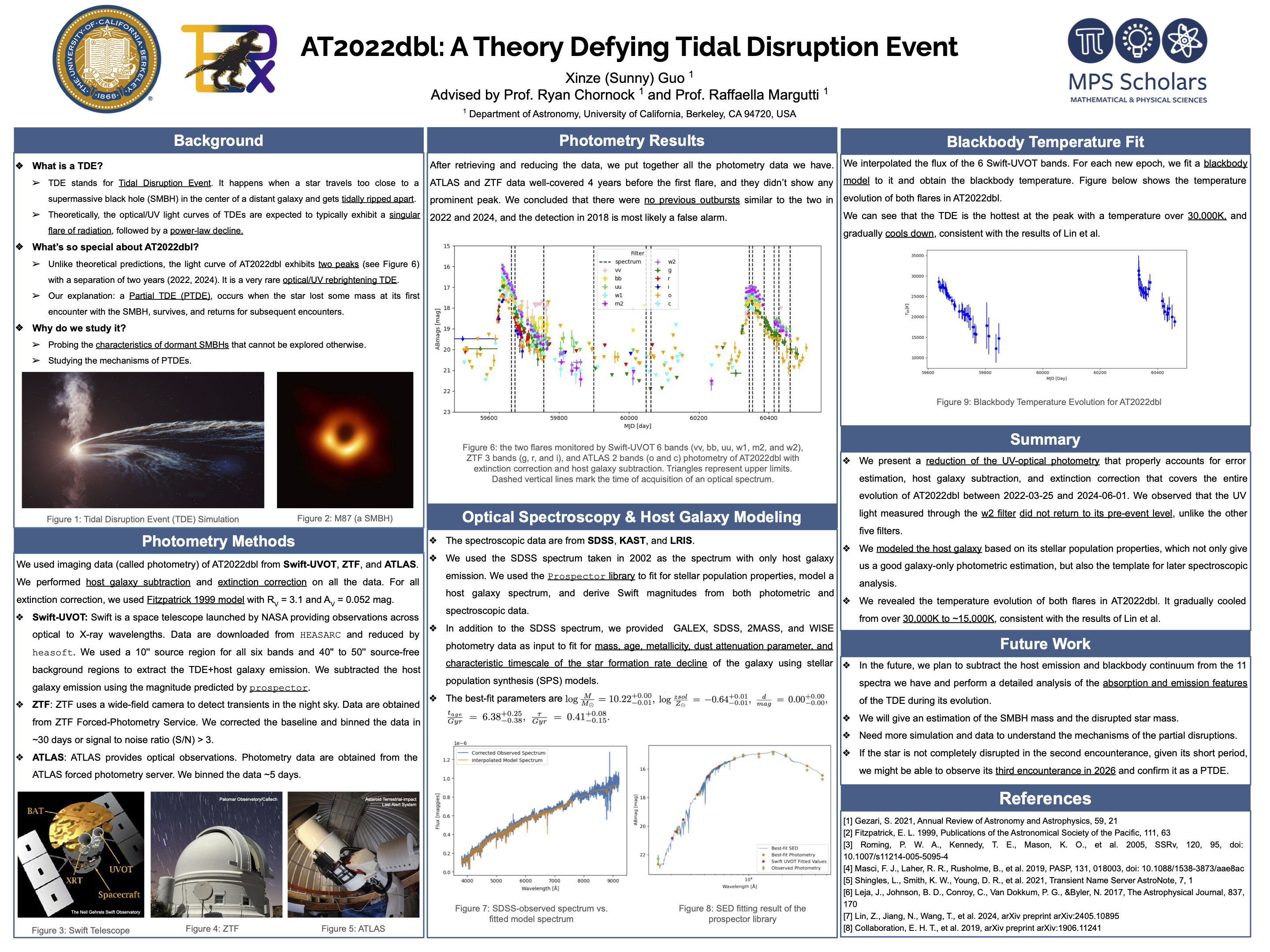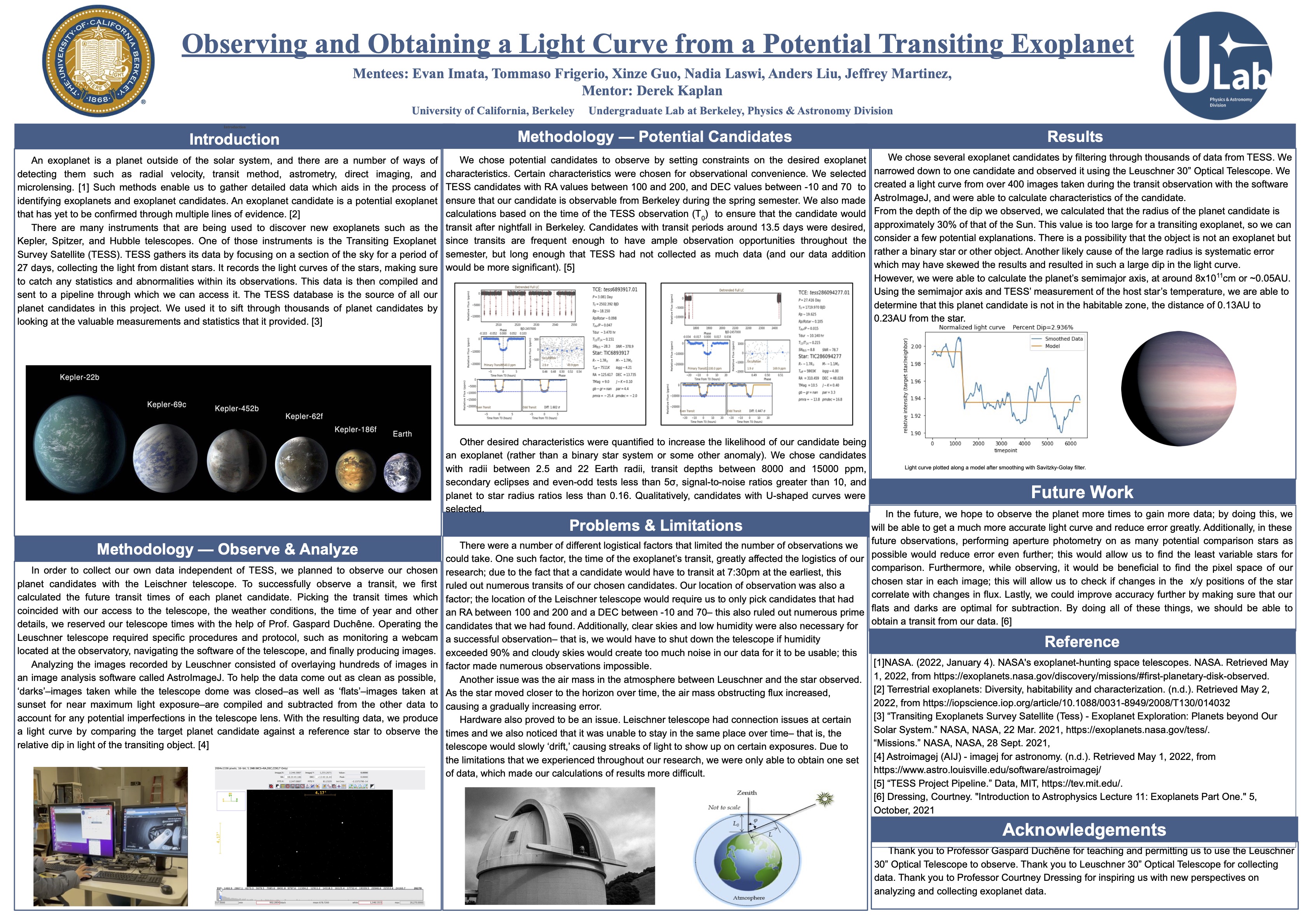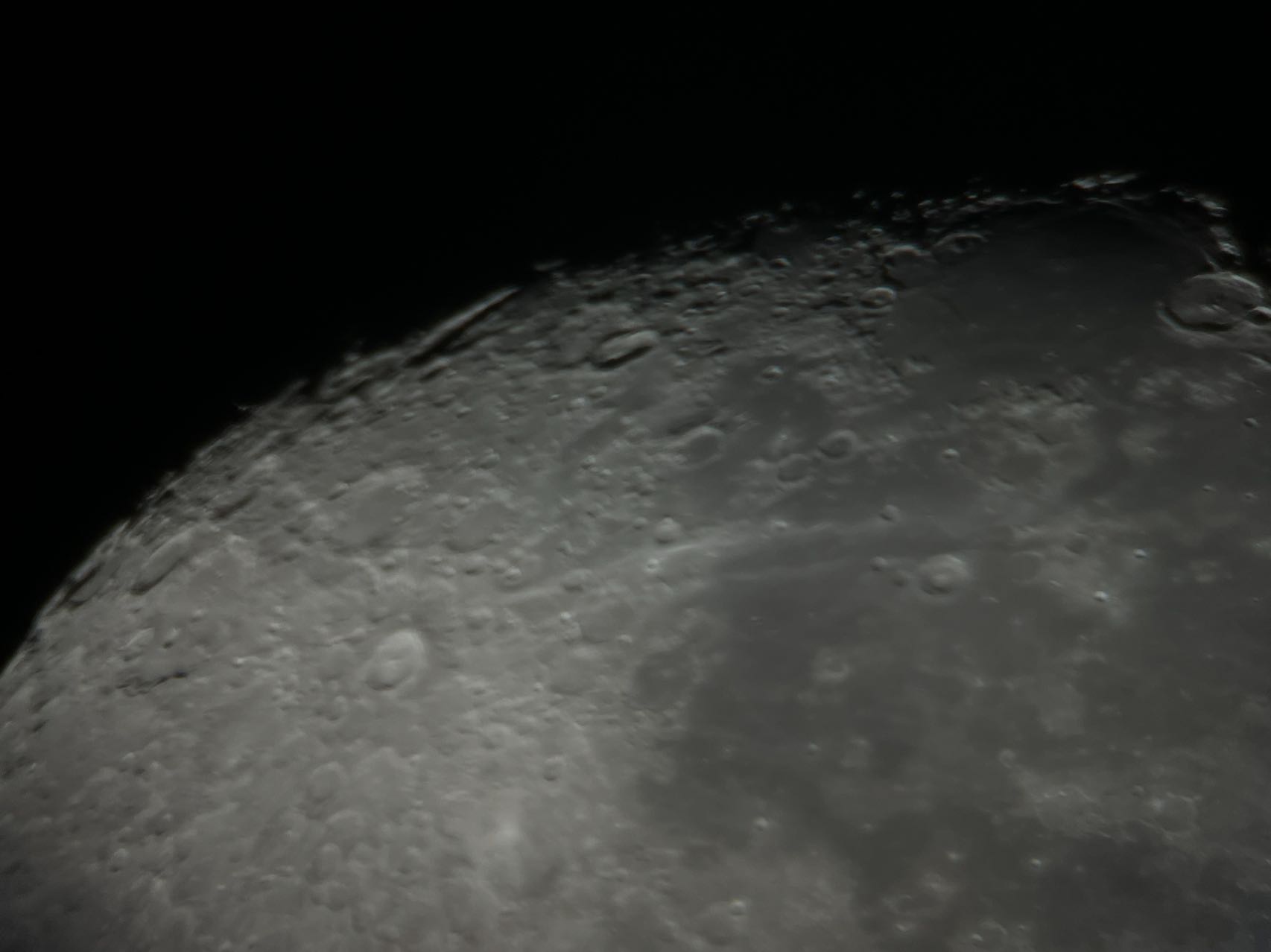About Me

Education:
University of California Berkeley
Expected BA in Astrophysics and Computer Science
Research Interests:
My primary research interest lies in Time-domain Observational Astrophysics. I focus on understanding the multi-wavelength evolution of these events by studying spectroscopic and photometric data from observatories. I am also passionate about applying programming and data analysis skills to study astrophysics topics. I aim to connect these discoveries to broader questions in astrophysics.
Hobbies:
I enjoy bird watching! I love reading science fiction and all sorts of
rich-plot books! I'm also a big fan of The Big Bang Theory.
Research
AT2022dbl: A Theory Defying Tidal Disruption Event (PI: Prof. Ryan Chornock, Prof. Raffaella Margutti)

Download Full-Size Poster (PDF)
A Tidal Disruption Event (TDE) occurs when a star gets tidally ripped apart by a supermassive black hole (SMBH). In rare cases, part of the star is torn apart while the remaining star continues to orbit the SMBH and is disrupted again in a subsequent encounter. This phenomenon is known as a partial TDE (pTDE).
AT2022dbl is a distinctive pTDE candidate. It was first observed in 2022 and had a very rare rebrightening in the optical/UV band in 2024. I reduced and analyzed optical and UV photometry data from ZTF, ATLAS, LT, and Swift-UVOT and concluded that there are no previous outbursts like the two flares in 2022 and 2024. Moreover, there is a UV plateau in the u2 filter.
After fitting a blackbody model to each epoch, I discovered that for both flares, there is a gradual cooling trend from ≈ 30,000 K to 15,000 K, similar to other TDEs. I reduced and analyzed spectra taken from Kast and LRIS, and found out that there are broad Hα, N III, and He II emission lines in both flares.
Exoplanet
An exoplanet is a planet outside of the solar system. Currently there are about 4800 exoplanets discovered through various methods, such as radial velocity, transit, astrometry, imaging, and microlensing. In this project, we are trying to discover and confirm an unknown exoplanet by looking and filtering over data from TESS and taking pictures of potential candidates. After selecting a candidate from looking through over 5000 data, we used Leuschner 30” Optical Telescope to observe two transits. We used AstroImageJ to deal with the observed pictures and plot the luminosity plot.

Mapper of the IGM Spin Temperature (MIST) (PI: Dr. Raul Monsalve)
I developed and implemented polar shapelets to decompose beam directivity analytically, achieving accurate modeling with less basis and improved flexibility in beam modification and computational efficiency
• Simulated antenna temperature spectra and applied chromaticity correction to recover the 21cm signal, assessing the
performance of shapelets models
Contact
Email: sunnyguo@berkeley.edu



